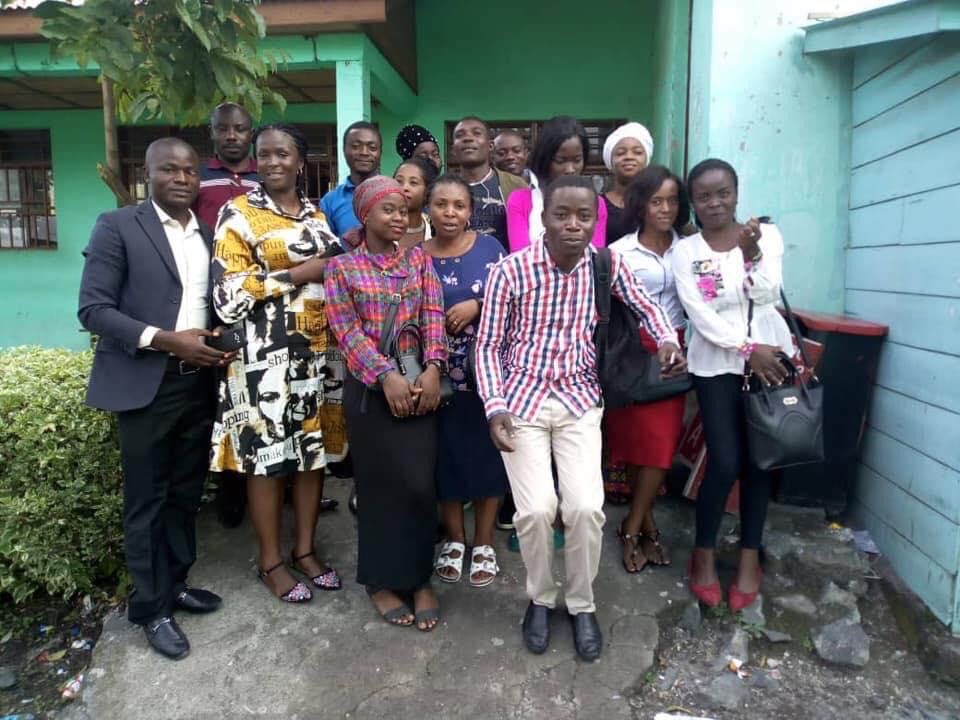
SELF-HELP AND RESILIENCE IN THE DEMOCRATIC REPUBLIC OF CONGO
I interviewed Bertin Kalimbiro from the Democratic Republic of Congo about his work in the Goma region to grow food safely and help people threatened
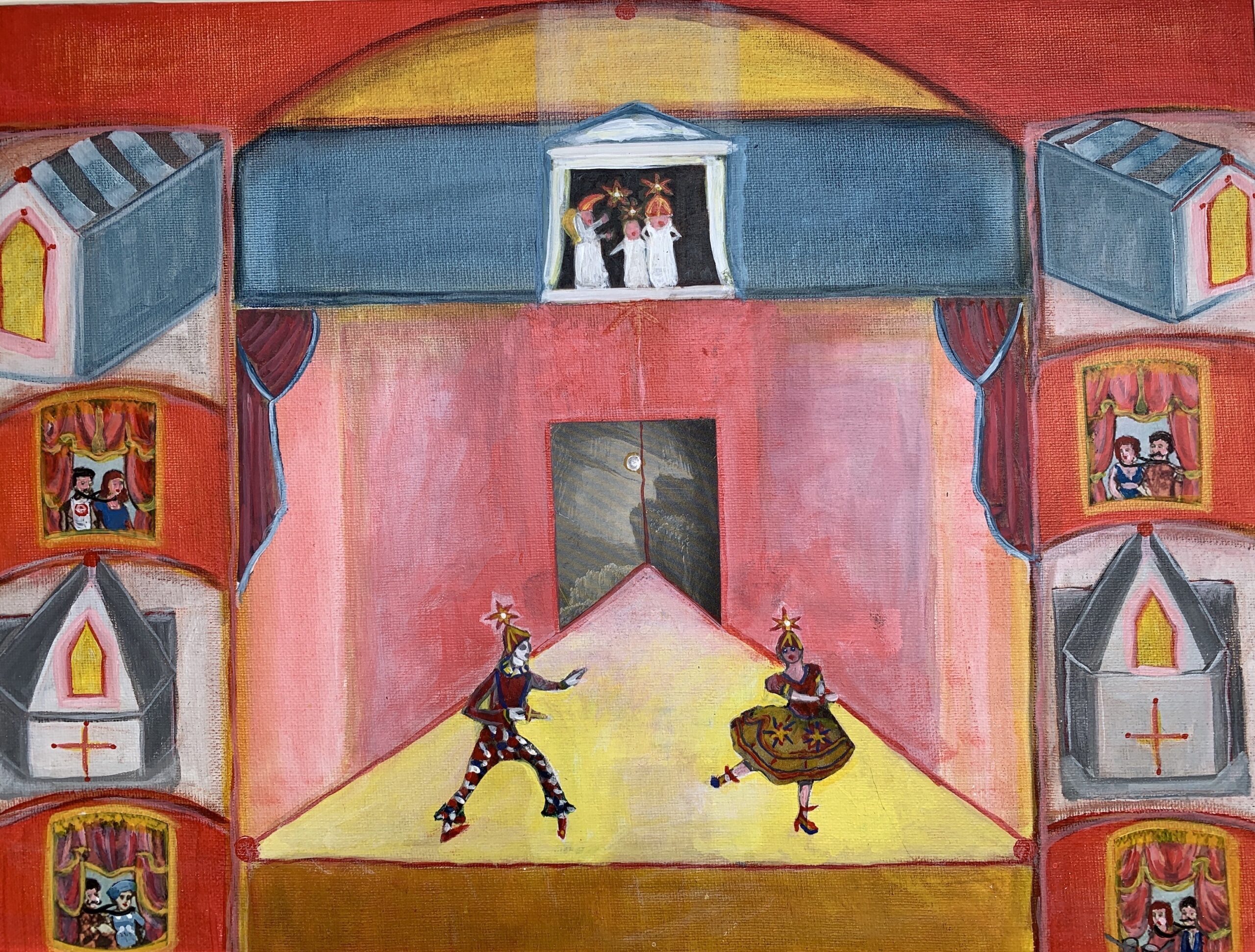
I interviewed artist, researcher and poet Becky Nuttall who creates powerful images around women’s identity. Becky, who comes from an artistic family, sometimes collages parts of her original childhood and art student works into paintings. She is the Chair of Torbay Guild of Artists and an English Riviera UNESCO Global Geopark Ambassador Artist.
Leslie: Tell us about your creative methods. How does a piece start, take shape, and develop into its final form? What are the conditions/habits/rituals that help you to stay fresh and original?
Becky: I went to art school in the early 1970s so the methodology to create work was a strange hybrid of exploring abstract concepts, formal life drawing and an almost quasi-religious teaching of the Modernism doctrine. All the creators were male except for Gertrude Stein who got a mention. I was also doing an English A level with Modernist texts. I was very academic so I did enjoy bringing together the many strands of art and literature. I wrote poetry from childhood so everything fed into everything. Being quite young it was quite disorganised in my head and work. The mostly male tutors did not actively encourage female students to stretch much beyond the domestic and illustrative. With Conceptualism being the driving force in art I think my art school struggled with the how gender equality played into the curriculum. It was quite lazy to allow females to fall back on prescriptive roles and not encourage them to challenge and explore. Although I come from a very creative background it was still through a male perspective. It was a patriarchal society, in education and at home. I have a degree in Literature and an MA in Equality and Diversity in Education and I specialised in the social development of adolescents in family society and education and adolescent development. This background now helps inform how I work now. When I begin a piece of work I research around the whole concept of the work. The date the piece is set in, the fashion and popular culture. I research art and art history to look at similar themes in history and I research paintings and photography for poses. I now paint mostly in Inktense block on canvas. I also paint in acrylics on canvas or wood and I collage. I have a studio so I can retreat to work in isolation. I play music all the time whether painting or writing. I work mostly in the afternoons. I’m curious about other artists’ work so I’ll spend some time looking at contemporary art. I’m also developing a contemporary British place writing project. This will combine poetry, art, journals, memoir and essays about the environment of the local area where I grew up, its social history and cultural heritage, including my own. For this I’m also researching the importance of juvenilia on adolescence and my own work. I have to try and strike a balance between research, writing and painting.
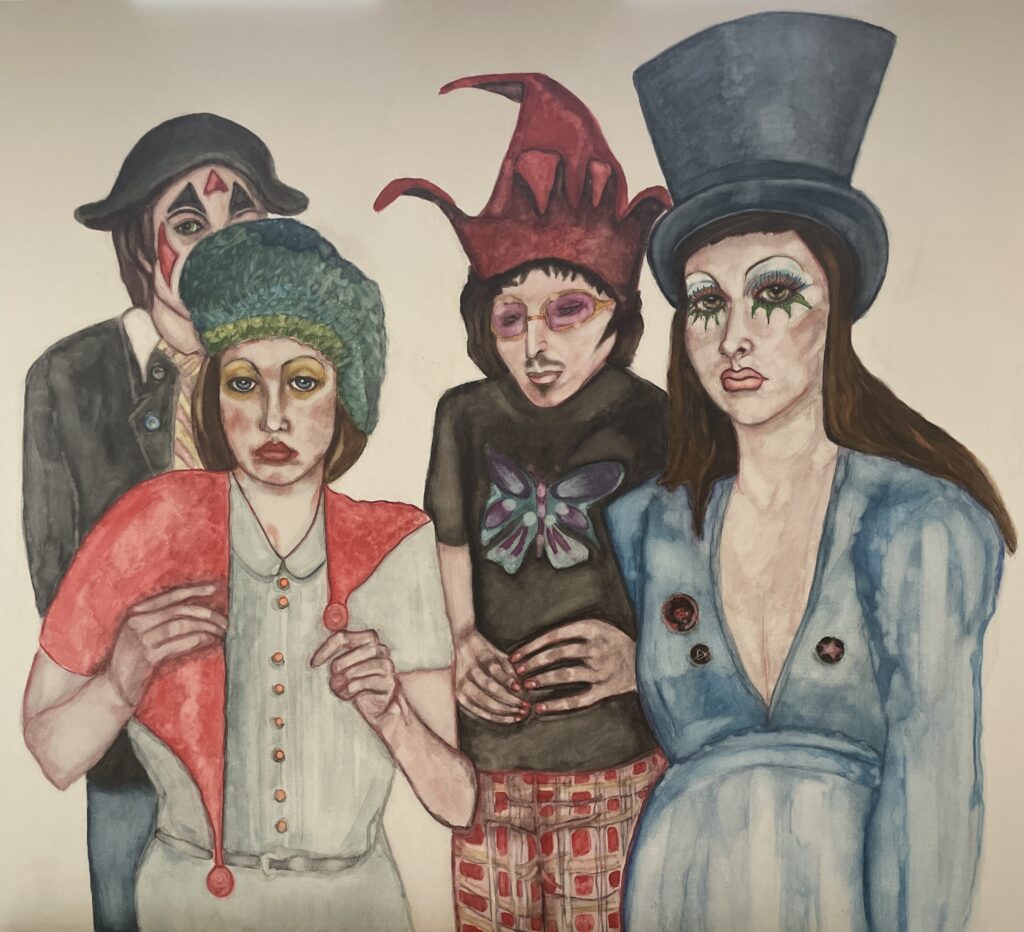
Leslie: You portray women who share aspects of your own upbringing. Can you tell the stories behind those portraits and what aspects of your experience went into them?
Becky: None of the women are real but they are based in a real culture of fashion, rock music and art. When I began painting ‘portraits’ of girls and women whose adolescence was based in the 1970s I had an overwhelming response from both women and men who felt connected to their own adolescence. I was told I was painting ‘our generation’ and that it is important to keep our culture visible. At first I painted the poses of David Bowie, being a fan who saw him perform in 1973 and 2004, and transposed him onto female characters from children’s literature. For example, Alice in Wonderland, Dorothy from the Wizard of Oz or Anne of Green Gables. I read a lot as a child and I was given books regularly. My parents encouraged to read any books in the house so I gave up on children’s literature at about 12 years old. My work then extended to other rock stars and Romantic poets with imagined female portraits. I have been looking at Pre-Raphaelite art and referenced the poses to illustrate a 1970s adolescence. I have also referenced the Modernists. In recent work I have used family photos from the 1970s as a reference. My work is layered and symbolic. Embedded in them is always my experience of growing up. All portraits are self-portraits as the saying goes, but I do believe all paintings are self-portraits. When people connect with my work, they see themselves too. The works are quite melancholy which is deliberate. There is joy in being young and remembering but it can be sad. My adolescence wasn’t easy so I can only show the truth of this is all my work whether writing or art.
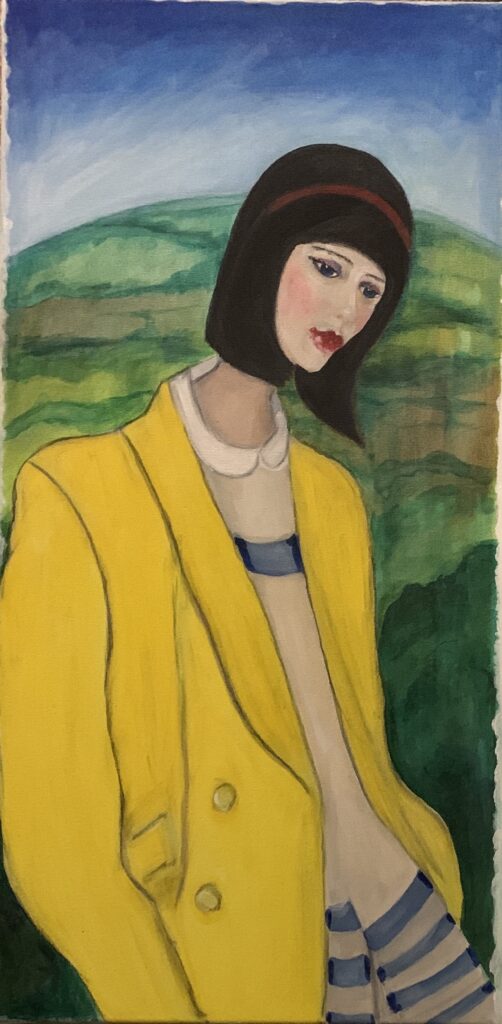
Leslie: What was your father like as a complex personality and artist, and how has he shaped you?
Becky: My father encouraged my art and poetry but he was the dominant artist and writer in the house. He gave good advice but he did not actively help me to find my place although he had many connections in the art world and I grew up surrounded by clever and talented artists. He was quite famous for about twenty years in his industry but my adolescence coincided with his struggle to get work and remain relevant. He worked in London for periods of time and had another life there. He couldn’t maintain all the personal and professional relationships and drank as a consequence. The only way for me to maintain a pride in what he achieved prior to the implosion was to return to his own youth by way of his art school folder and his early career as a ceramist in his own pottery in the 1950s. Having a heritage based in mid-century art and popular culture is significant. I asked my sister’s permission to promote his work alongside mine as we all have a different perspective. I have collaged his art work into my own and I have written poetry incorporating lines from his own poetry, from lists and letters. This has brought our work together but on my terms and with my gaze.
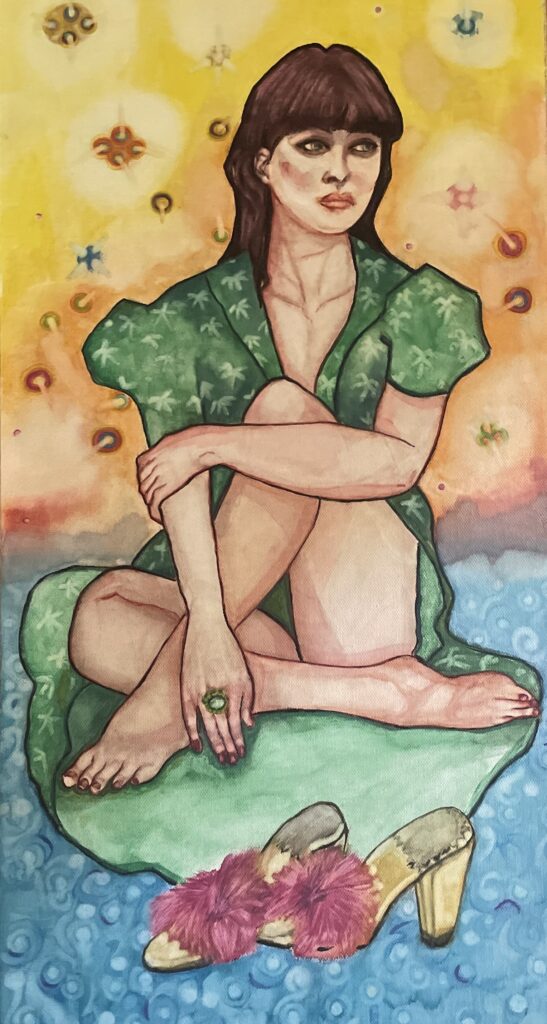
Leslie: What has been the artistic/psychological importance of different types of clothes for you?
Becky: I’d never minimise the importance of fashion on young people. Fashion became the vehicle to stand out whether in a band, politically or in street fashion. In my early teens I created a look through charity shop finds, hand downs from my sisters and mixing it all up a bit. I wore, and still wear, black eyeshadow and later kohl when it became available in the early 80s. However, where I lived as a teenager it took at least six months for London fashion to reach the shires. It was hard to connect to a tribe. I worked in the holidays to afford clothes, shoes and music without having to ask my parents for money. I bought a pair of platform shoes that I placed in my eye line so they would be the first thing I saw when I woke up. I went to Biba in Kensington when I was sixteen. I couldn’t afford anything but it was like going to church. My mother was very glamorous and clothes were seen as an addition to our personalities. We all had different tastes but never boring. My identity was connected to the clothes I wore and I always wanted to be an individual. I was influenced by the glam rock of Bowie, Bolan, Elton John and the art school rock of Roxy Music. When I research art movements either academically or artistically it is obvious clothes are hugely important whether it’s Bauhaus, Pre Raphaelite women or Dada cabaret. Fashion inspires my creativity.
Leslie: Which of your creative works are the best examples of a) social observation b) religious/mythical exploration? Why are you drawn to these very different areas of expression, and do they overlap/coincide/offset each other in your work?
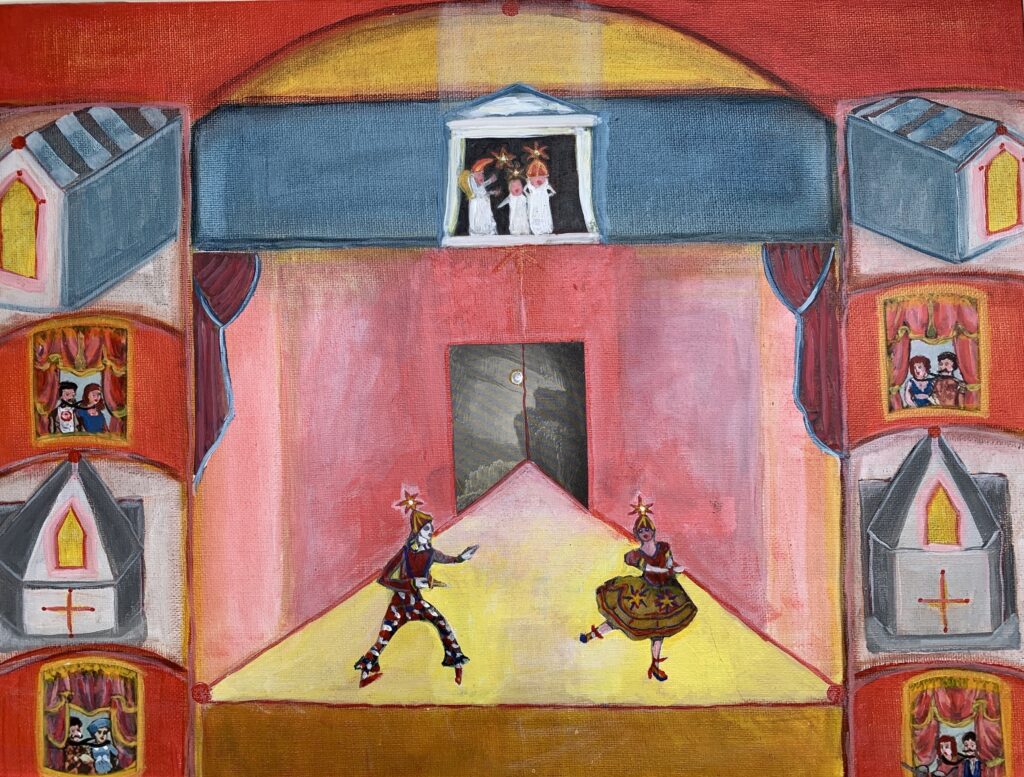
Becky: In 2021 I had my painting ‘The Anchorhold 1971’ accepted and sold at The Royal Academy Summer Exhibition. I painted it initially for an exhibition at Hereford College of Arts for International Women’s Day. The painting/collage is set in a Mr Jackson’s Toy Theatre. The theatre boxes are painted as anchorholds and contain a woman and a man with the woman being connected to the man by a rope around their necks. Each woman represents a job or activity women were not allowed to access in 1971, either as women or without their husband’s permission. The performers on the stage are representations of Columbine and Harlequin. The dance represents an incident when I was 15 and physically assaulted on a dance floor by an older male stranger because I wouldn’t dance with him. I didn’t report it and never went to a club again.
“C’mon C’mon” is a collage I created showing Jesus and John the Baptist. Jesus is wrapped in his fleecy blanket with the lyrics of Away in a Manger printed on it. John the Baptist is dressed in a gold jacket and a Wizzard T shirt. My religious works are the counterpoint to my convent education and the iconography on the school walls. I thought the images were glamorous but I wasn’t religious. I think religions are like death cults. Jesus and John were cousins and I like the idea of Jesus being tempted into the world of rock music.
My works are observations of the reality of the world in which we were born and we continue to live in. I have also participated in, observed and researched the myths and doctrines invented to control societies. It’s inevitable that this human experience will be in my work. Art is a language and all my art translates into my humanist experience.
Next week I interview Tamsin Lillie, CEO of Medic To Medic, about supporting healthcare workers in Malawi
ABOUT LESLIE TATE’S BOOKS:

I interviewed Bertin Kalimbiro from the Democratic Republic of Congo about his work in the Goma region to grow food safely and help people threatened

I interviewed computer expert and sustainability campaigner Dr Erlijn van Genuchten, who writes easy-to-understand books based on science full of practical suggestions for planet-friendly living.
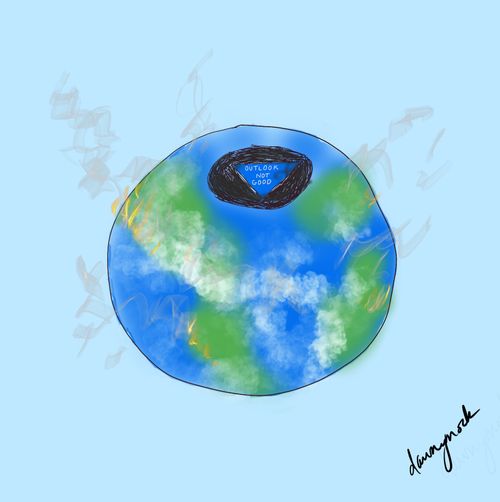
I interviewed Canadian cartoonist Dawn Mockler about how she works on cartoons that might be environmental or wordless but always witty – especially her famous
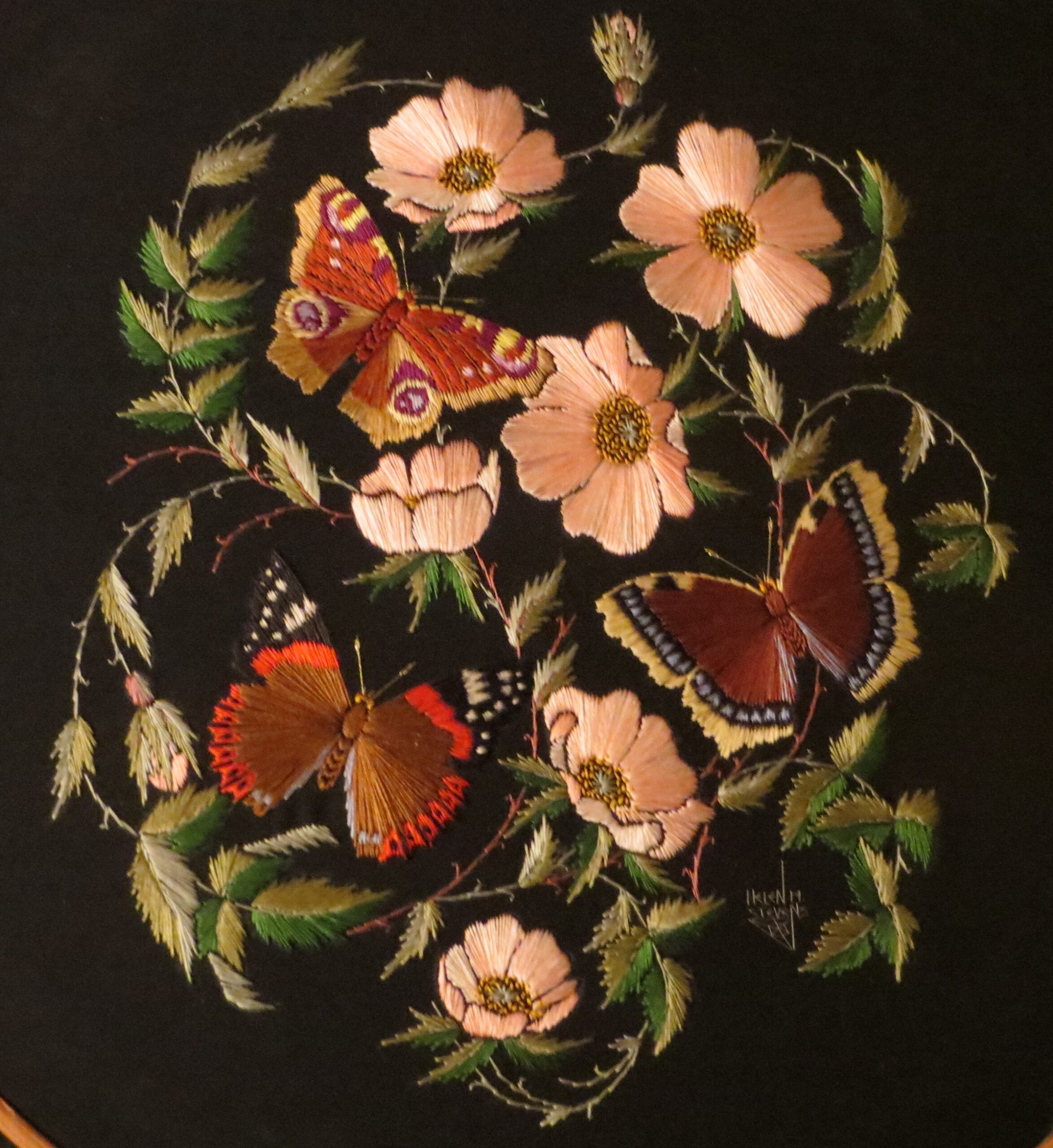
I inteviewed Helen M Stevens about how she has revived the art of embroidery, creating original contemporary patterns while studying and drawing on, “One of

I interviewed Councillor Rachel Smith-Lyte about the origins of her passion for nature and her environmental activism. Rachel tells the story of her teaching (and
| Cookie | Duration | Description |
|---|---|---|
| cookielawinfo-checkbox-analytics | 11 months | This cookie is set by GDPR Cookie Consent plugin. The cookie is used to store the user consent for the cookies in the category "Analytics". |
| cookielawinfo-checkbox-functional | 11 months | The cookie is set by GDPR cookie consent to record the user consent for the cookies in the category "Functional". |
| cookielawinfo-checkbox-necessary | 11 months | This cookie is set by GDPR Cookie Consent plugin. The cookies is used to store the user consent for the cookies in the category "Necessary". |
| cookielawinfo-checkbox-others | 11 months | This cookie is set by GDPR Cookie Consent plugin. The cookie is used to store the user consent for the cookies in the category "Other. |
| cookielawinfo-checkbox-performance | 11 months | This cookie is set by GDPR Cookie Consent plugin. The cookie is used to store the user consent for the cookies in the category "Performance". |
| viewed_cookie_policy | 11 months | The cookie is set by the GDPR Cookie Consent plugin and is used to store whether or not user has consented to the use of cookies. It does not store any personal data. |